Abstract
This article presents the findings of a survey of a group of 52 traditional birth attendants (TBAs) in a clan in south-eastern Nigeria. The purpose of the study was to develop a database from which to design an effective programme for TBAs in the safe delivery and early referral of women with complications to hospital. The study showed that the majority of TBAs were illiterate and had no previous experience or training, even informal training, when they took on the TBA role. Ignorance about maternal complications during childbirth and the appropriate treatment was evident for most of the group. A small number of the group relied solely on divine revelation for guidance in the management of child-bearing women. The results of the survey clearly showed that educational programmes for TBAs and better integration into the health care system are essential for lowering maternal mortality and morbidity rates in areas where most mothers are not open to nor have access to professional care in childbirth.
Full text
PDF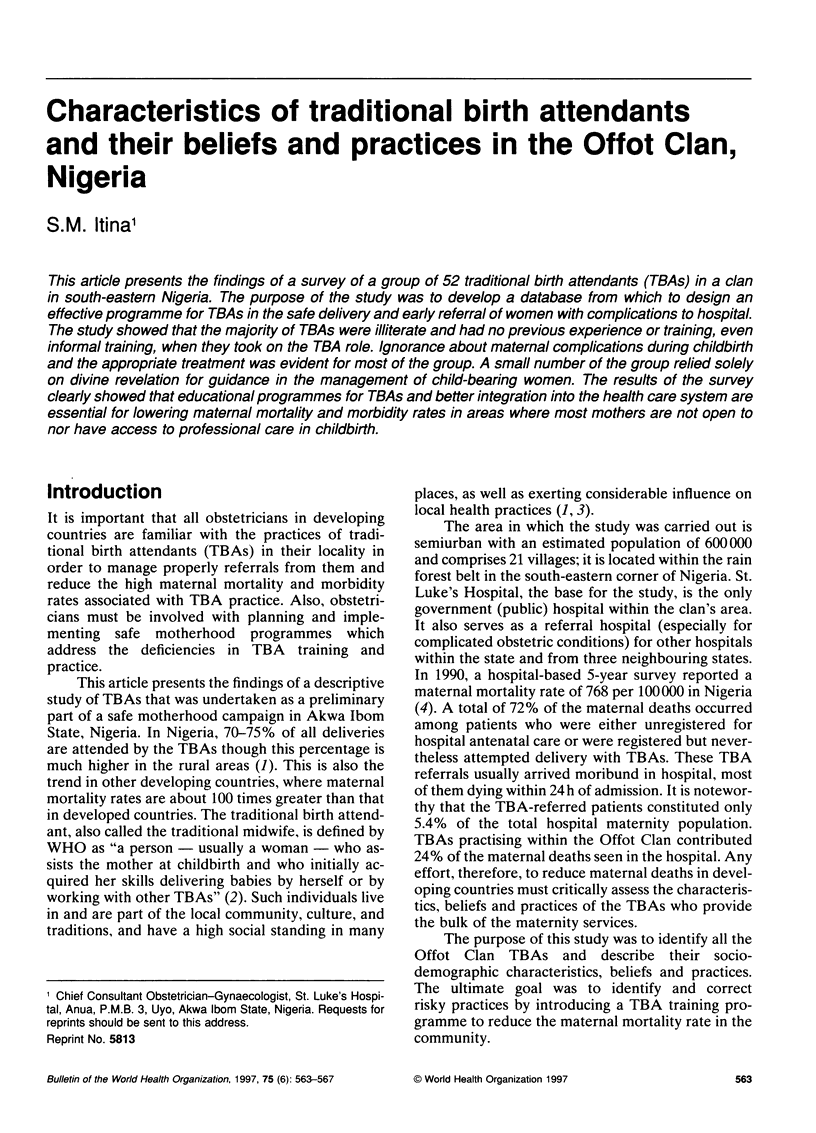
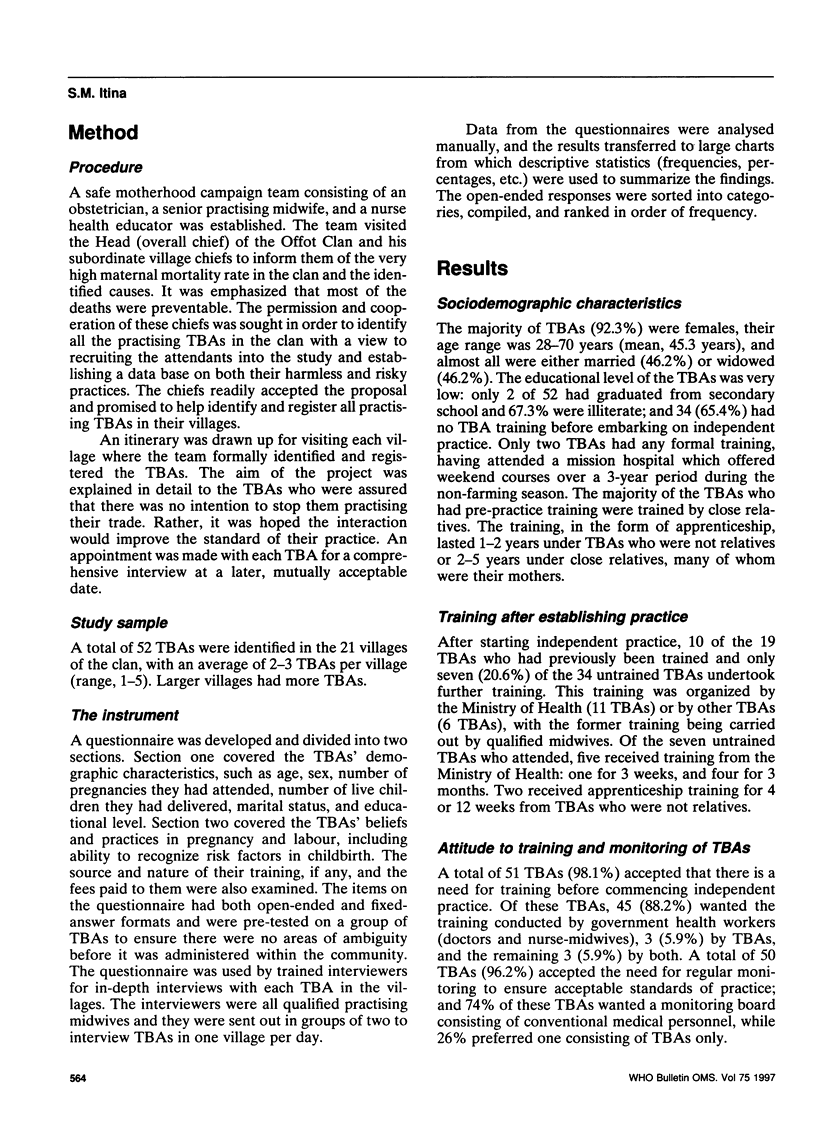
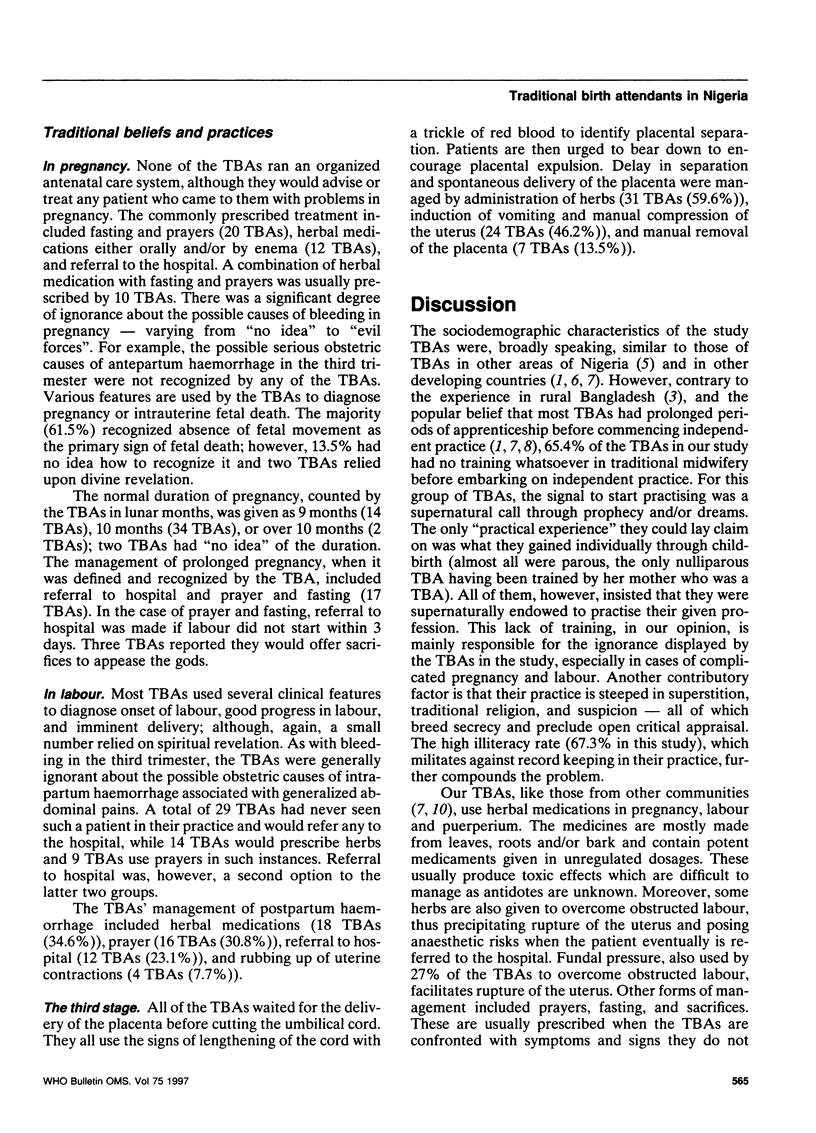
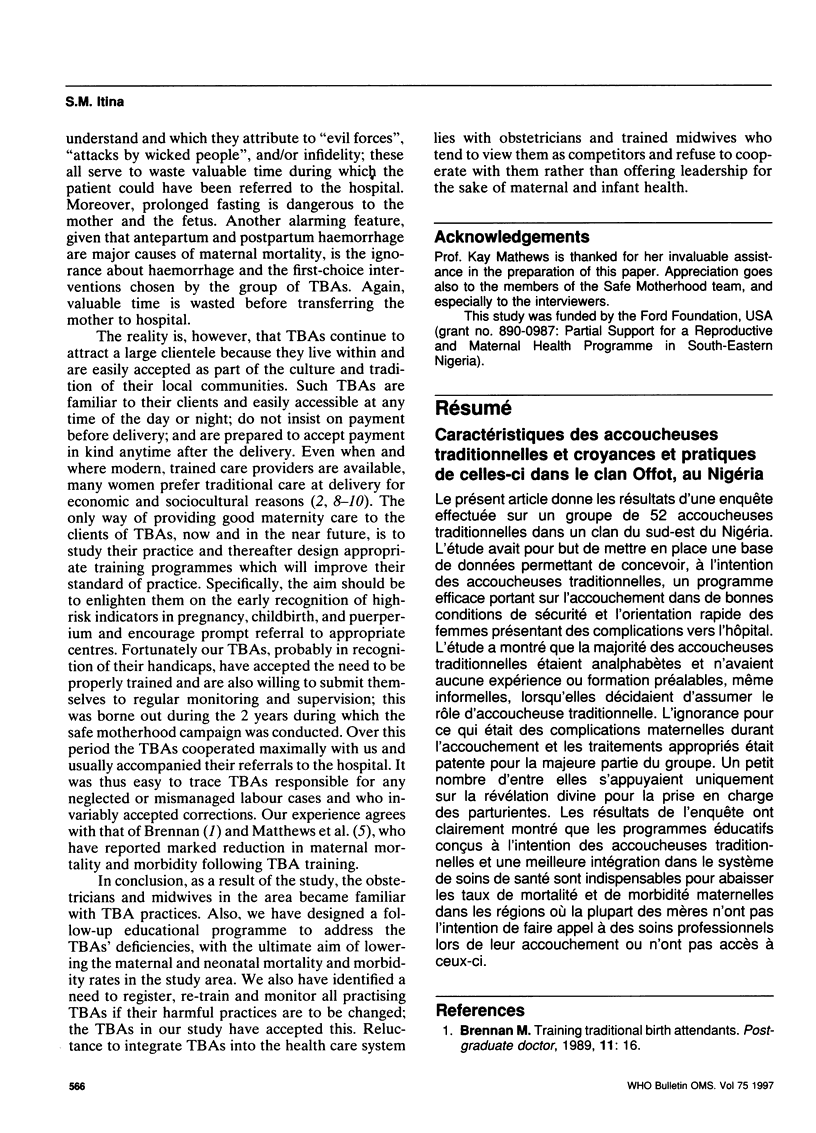
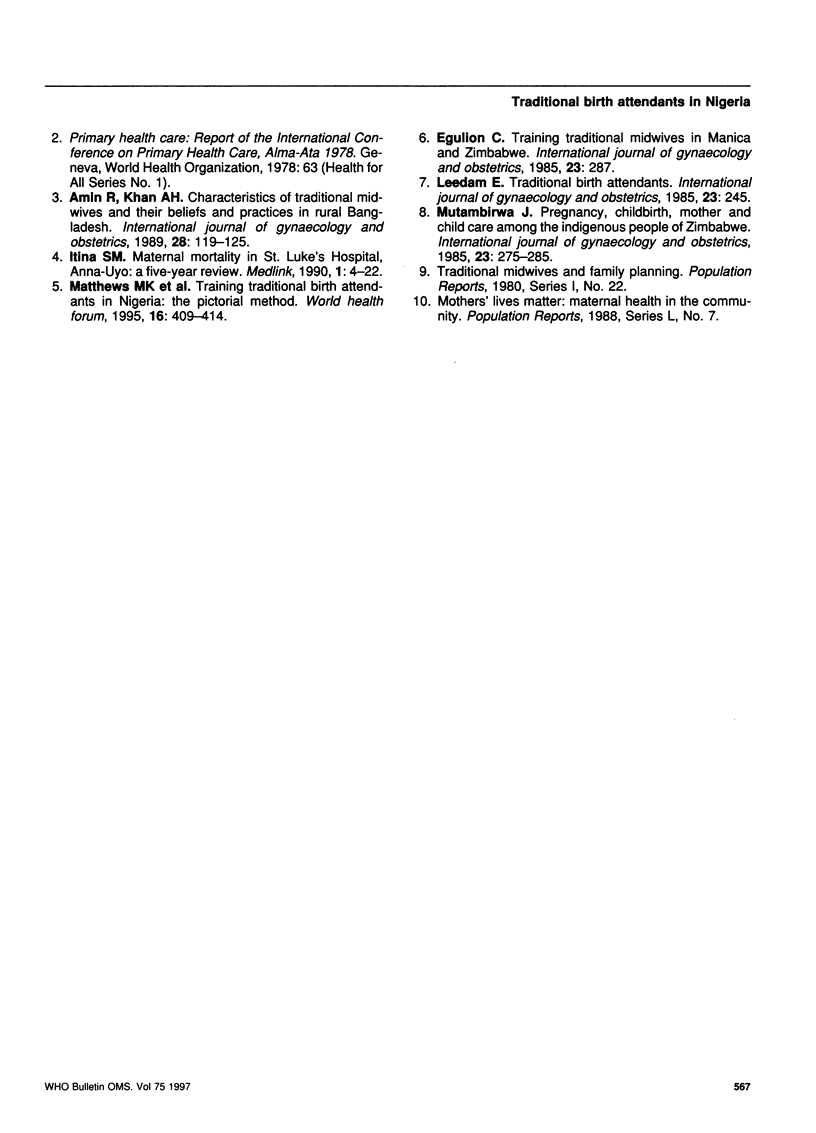
Selected References
These references are in PubMed. This may not be the complete list of references from this article.
- Amin R., Khan A. H. Characteristics of traditional midwives and their beliefs and practices in rural Bangladesh. Int J Gynaecol Obstet. 1989 Feb;28(2):119–125. doi: 10.1016/0020-7292(89)90470-0. [DOI] [PubMed] [Google Scholar]
- Matthews M. K., Walley R. L., Ward A., Akpaidem M., Williams P., Umoh A. Training traditional birth attendants in Nigeria--the pictorial method. World Health Forum. 1995;16(4):409–413. [PubMed] [Google Scholar]
- Mutambirwa J. Pregnancy, childbirth, mother and child care among the indigenous people of Zimbabwe. Int J Gynaecol Obstet. 1985 Sep;23(4):275–285. doi: 10.1016/0020-7292(85)90021-9. [DOI] [PubMed] [Google Scholar]


